Using Open Access Satellite Data Alongside Ground Based Remote Sensing: An Assessment, with Case Studies from Egypt’s Delta
Abstract
:1. Introduction
2. Materials and Methods
2.1. CORONA Imagery in Egypt
2.2. An Overview of Ground-Based Remote Sensing in Egypt
3. Results
Nile Delta Remote Sensing Results
4. Discussion
4.1. Results from the Nile Delta Satellite Imagery Assessment
4.2. Results from the Tell Tebilla Excavations
4.3. Comparing Space-Based Remote Sensing Results to Ground Based Remote Sensing at Tell Tebilla
5. Conclusions
Acknowledgments
Author Contributions
Conflicts of Interest
References
- Challis, K.; Priestnall, G.; Gardner, A.; Henderson, J.; O’Hara, S. Corona remotely-sensed imagery in Dryland archaeology: The islamic city of al-Raqqa, Syria. J. Field Archaeol. 2002–2004, 29, 139–153. [Google Scholar] [CrossRef]
- Hritz, C. Tracing settlement patterns and channel systems in Southern Mesopotamia using remote sensing. J. Field Archaeol. 2010, 35, 184–203. [Google Scholar] [CrossRef]
- Kennedy, D. Declassified satellite photographs and archaeology in the Middle East: Case studies from Turkey. Antiquity 1998, 72, 553–561. [Google Scholar] [CrossRef]
- Wilkinson, T. Surface collection, field walking, theory and practice, sampling theories. In Handbook of Archaeological Sciences; Pollard, A., Brothwell, D., Eds.; John Wiley: New York, NY, USA, 2001. [Google Scholar]
- Stone, E. Patterns of looting in southern Iraq. Antiquity 2008, 82, 125–138. [Google Scholar] [CrossRef]
- Parcak, S. Going, going, gone: Towards a satellite remote sensing methodology for monitoring archaeological tell sites under threat in the Middle East. J. Field Archaeol. 2007, 42, 61–83. [Google Scholar]
- Menze, B.; Ur, J. Mapping patterns of long-term settlement in Northern Mesopotamia at a large scale. Proc. Natl. Acad. Sci. USA 2012, 109, E778–E787. [Google Scholar] [CrossRef] [PubMed] [Green Version]
- Casana, J.; Panahipour, N. Notes on a disappearing past: Satellite-based monitoring of looting and damage to archaeological sites in Syria. J. East. Mediterr. Heritage Stud. 2012, 2, 128–151. [Google Scholar]
- American Association for the Advancement of Science (AAAS). Ancient History, Modern Destruction: Assessing the Current Status of Syria’s World Heritage Sites Using High-Resolution Satellite Imagery; AAAS: Washington, DC, USA, 2014. [Google Scholar]
- Contreras, D.; Brodie, N. The utility of publicly-available satellite imagery for investigating looting of archaeological sites in Jordan. J. Field Archaeol. 2010, 35, 101–114. [Google Scholar] [CrossRef]
- Parcak, S. Archaeological looting in Egypt: A geospatial View (case studies from Saqqara, Lisht, and el Hibeh). Near East. Archaeol. 2015, 78, 196–203. [Google Scholar] [CrossRef]
- Parcak, S.; Gathings, D.; Childs, C.; Mumford, G.; Cline, E. Satellite evidence of archaeological site looting in Egypt: 2002–2013. Antiquity 2016, 90, 188–205. [Google Scholar] [CrossRef]
- Wilkinson, T.J.; Ur, J.; Casana, J. Nucleation to dispersal: Trends in settlement patterns in the northern Fertile Crescent. In Side-by-Side Survey: Comparative Regional Studies in the Mediterranean World; Alcock, S., Cherry, J., Eds.; Oxbow: Oxford, UK, 2004; pp. 198–205. ISBN 1842170961. [Google Scholar]
- Ur, J. Corona satellite photography ancient road networks: A northern Mesopotamian case study. Antiquity 2003, 77, 102–115. [Google Scholar] [CrossRef]
- Ur, J. Sennacherib’s northern Assyrian canals: New insights from satellite imagery and aerial photographs. Iraq 2005, 67, 317–345. [Google Scholar] [CrossRef]
- Moshier, S.; El-Kalani, A. Late Bronze Age Paleogeography along the ancient ways of Horus in Northwest Sinai, Egypt. Geoarchaeology 2008, 23, 450–473. [Google Scholar] [CrossRef]
- Corona Atlas & Referencing System. Available online: http://CORONA.cast.uark.edu/ (accessed on 19 September 2017).
- Casana, J.; Cothren, J. The Corona Atlas Project: Orthorectification of corona satellite imagery and regional-scale archaeological exploration in the near east. In Mapping Archaeological Landscapes from Space; Comer, D., Harrower, M., Eds.; Springer: New York, NY, USA, 2013; pp. 33–43. ISBN 978-1-4614-6073-2. [Google Scholar]
- Mumford, G. Reconstruction of the temple at Tell Tebilla (East Delta). In Egypt, Israel and the Ancient Mediterranean World: Studies in Honour of Donald B. Redford; Knoppers, G., Hirsch, A., Eds.; Brill: Leiden, The Netherlands, 2002; pp. 267–286. ISBN 9789004138445. [Google Scholar]
- Mumford, G. Concerning the 2001 Season at Tell Tebilla (Mendesian Nome). In The Akhenaten Temple Project Newsletter; Pennsylvania State University: College Park, PA, USA, 2002; pp. 1–4. [Google Scholar]
- Mumford, G. The University of Toronto Tell Tebilla Project (Eastern Delta). The American Research Center in Egypt Annual Report, 2001; Emory University West Campus: Atlanta, GA, USA, 2001; pp. 26–27. [Google Scholar]
- Pavlish, L. 2004 Archaeometry at Mendes, 1990–2002. In Egypt, Israel and the Ancient Mediterranean World: Studies in Honour of Donald B. Redford; Knoppers, G., Hirsch, A., Eds.; Brill: Leiden, The Netherlands, 2002; pp. 61–112. ISBN 789004138445. [Google Scholar]
- Becker, H.; Fassbinder, J. In search of Piramesses—The lost capital of Ramesses II in the Nile Delta (Egypt) by caesium magnetometry. In Archaeological Prospection, Arbeitshefte des Bayerischen Landesamtes für Denkmalpflege; Fassbinder, J., Irlinger, W., Petzet, M., Eds.; Bayerischen Landesamtes für Denkmalpflege: München, Germany, 1999; pp. 146–150. ISBN 387499699X. [Google Scholar]
- Mathieson, I. The National Museums of Scotland Saqqara Survey Project, 1990–2000. In Abusir and Saqqara in the year 2000; Bárta, M., Krejčí, J., Eds.; Archiv Orientalni: Prague, Czech Republic, 2002; pp. 27–39. ISBN 8085425394. [Google Scholar]
- Herbich, T. Archaeological geophysics in Egypt: The Polish contribution. Archaeol. Pol. 2003, 41, 13–56. [Google Scholar]
- Egypt Exploration Society Delta Survey Website. Available online: http://deltasurvey.ees.ac.uk/ds-home.html (accessed on 12 July 2017).
- Spencer, A. The exploration of Tell Belim, 1999–2002. J. Egypt. Archaeol. 2002, 88, 37–51. [Google Scholar] [CrossRef]
- Spencer, A.; Spencer, P. A new kingdom temple in the Delta. Egypt. Archaeol. 2004, 45, 5–8. [Google Scholar]
- Milne, J. The Tukh el-Qaramus Gold Hoard. J. Egypt. Archaeol. 1941, 27, 135–137. [Google Scholar] [CrossRef]
- Spencer, N. Kom Firin I: The Ramesside Temple and the Site Survey; British Museum Research Publication 170; British Museum Press: London, UK, 2008; ISBN 978-086159-170-1. [Google Scholar]
- Lloyd, A. The Late Period, 664–323 BC. In Ancient Egypt: A Social History; Trigger, B., Kemp, B., O’Connor, D., Lloyd, A., Eds.; Cambridge University Press: Cambridge, UK, 1983; pp. 279–348. ISBN 0521284279. [Google Scholar]
- Mumford, G. A late period riverine and maritime port town and cult center at Tell Tebilla (Ro-Nefer). J. Anc. Egypt. Interconnect. 2013, 5, 38–67. [Google Scholar]
- Connecting Africa to the Internet. Available online: https://www.brck.com/ (accessed on 19 September 2017).
- The Egyptian Antiquities Information System. Available online: http://www.arce.org/files/resource/h/rsrc/EAIS_July_2003.pdf (accessed on 19 September 2017).
- Globalxplorer. Available online: https://www.globalxplorer.org (accessed on 19 September 2017).
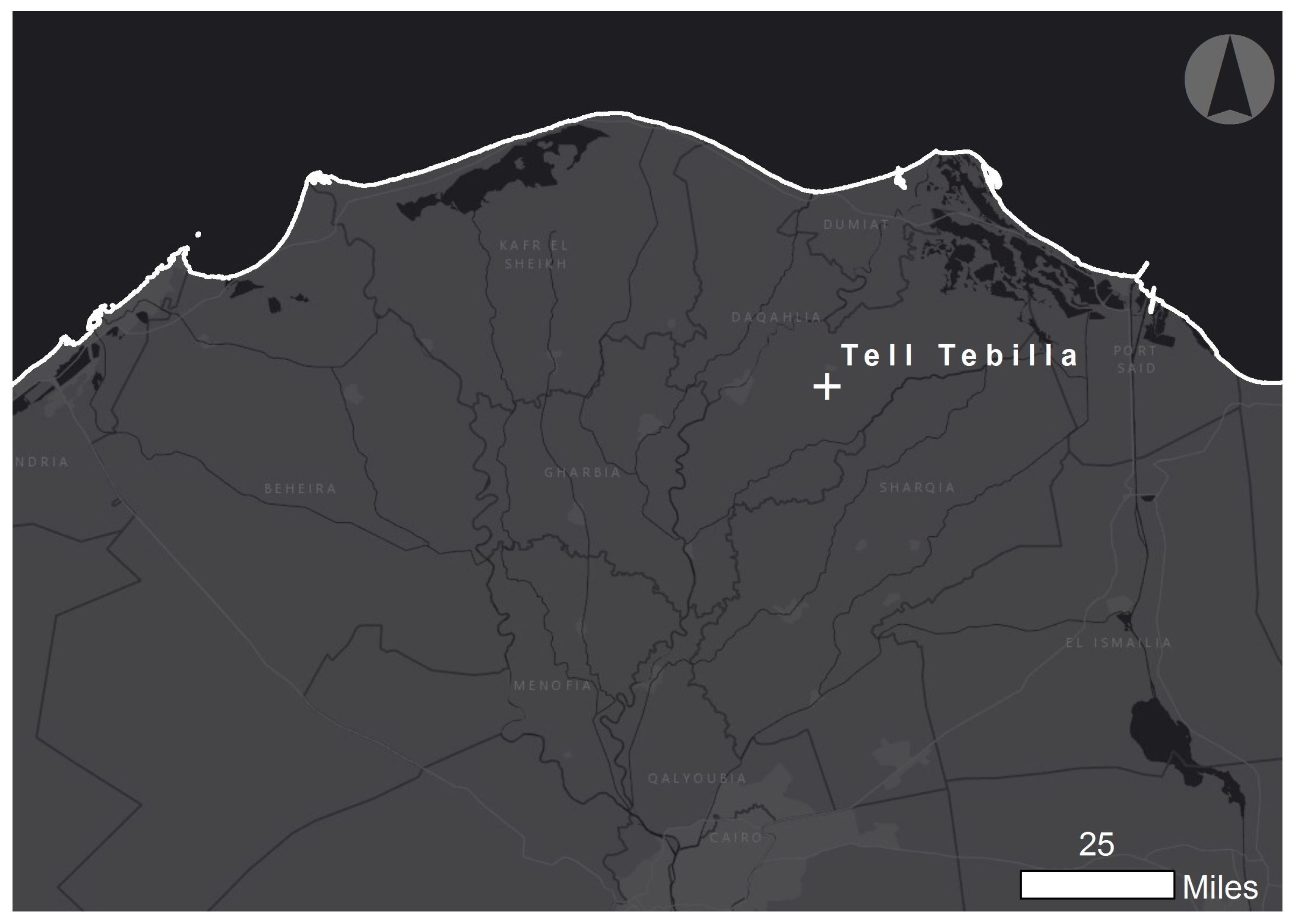

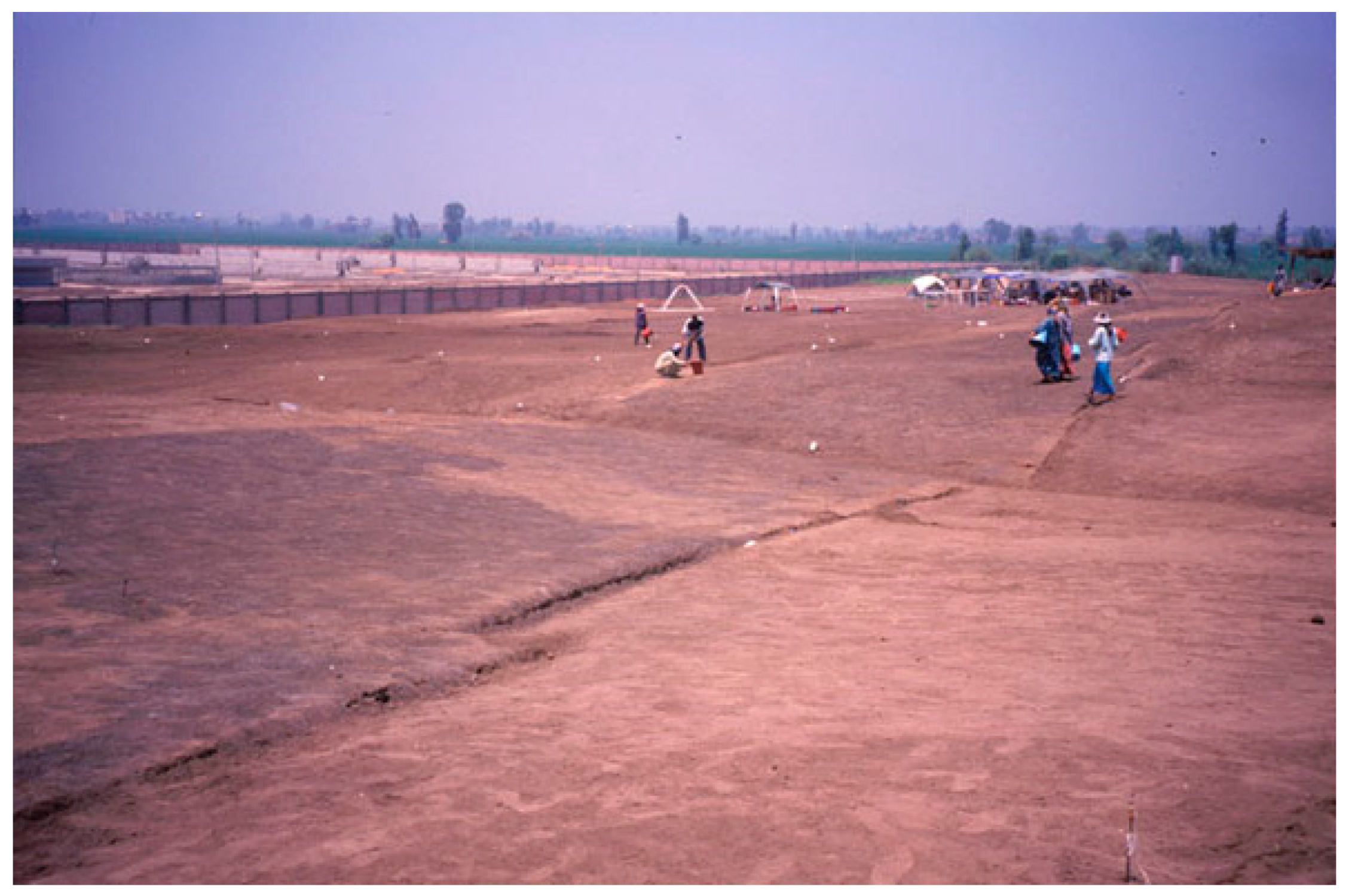
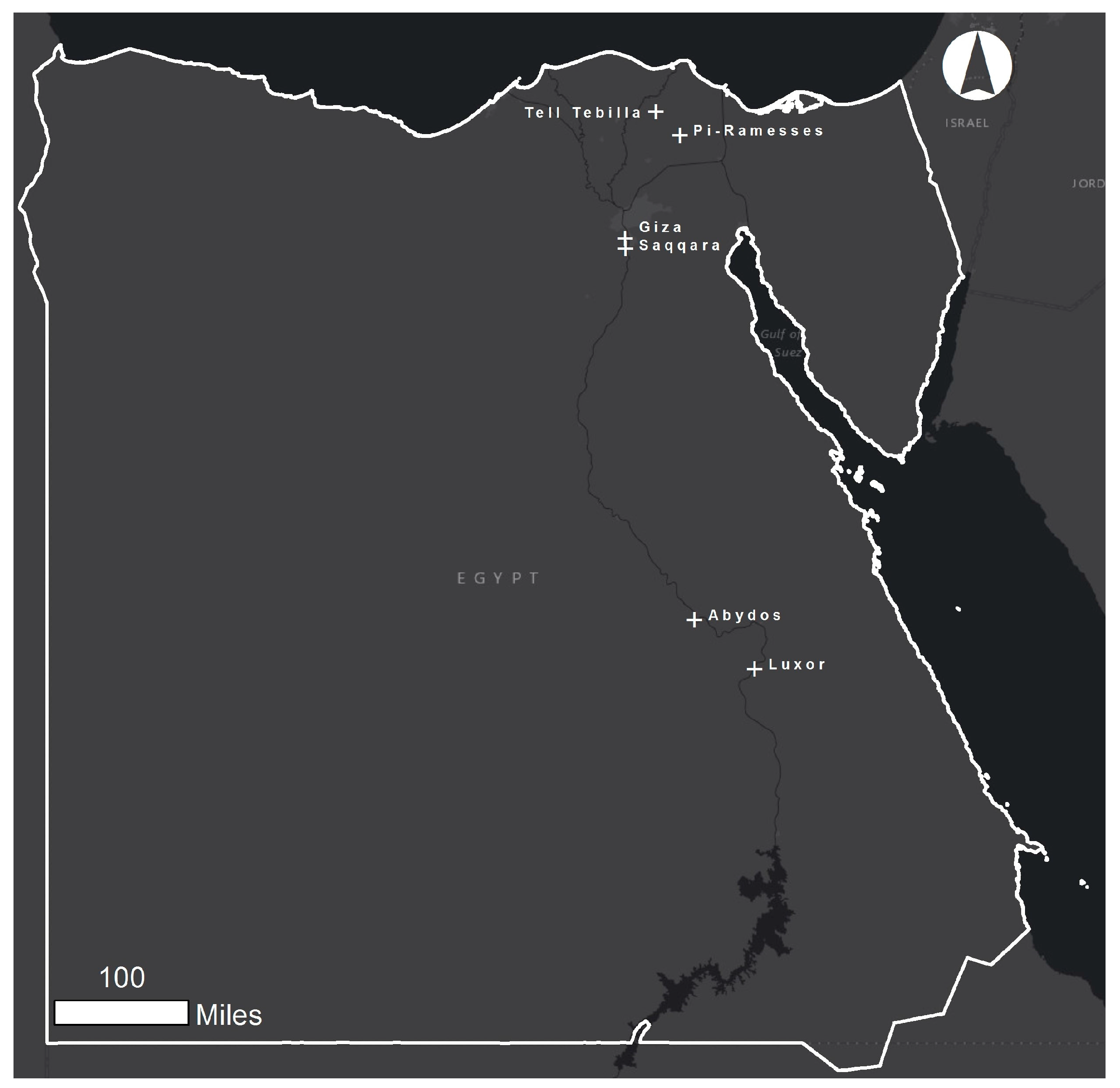
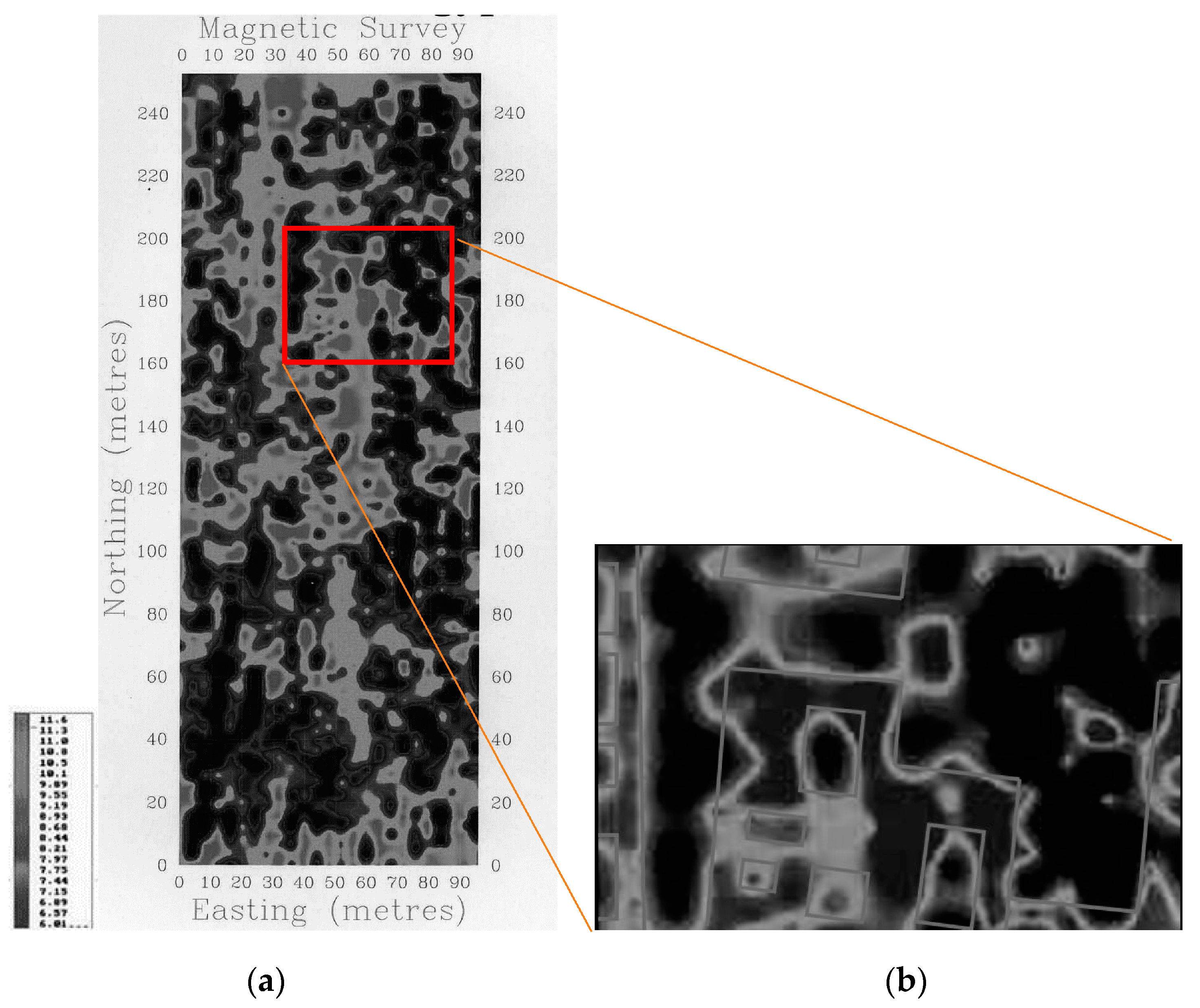
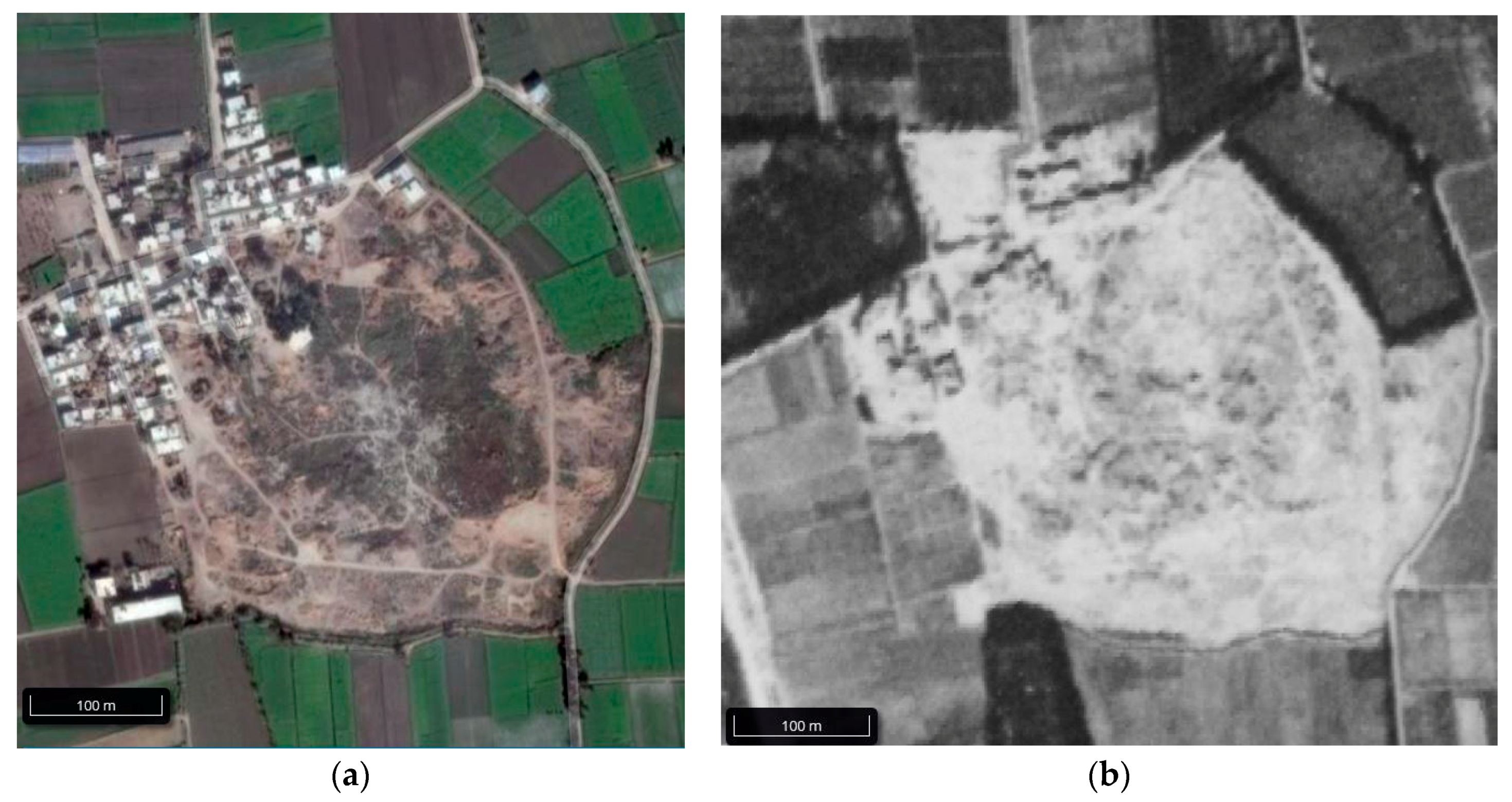
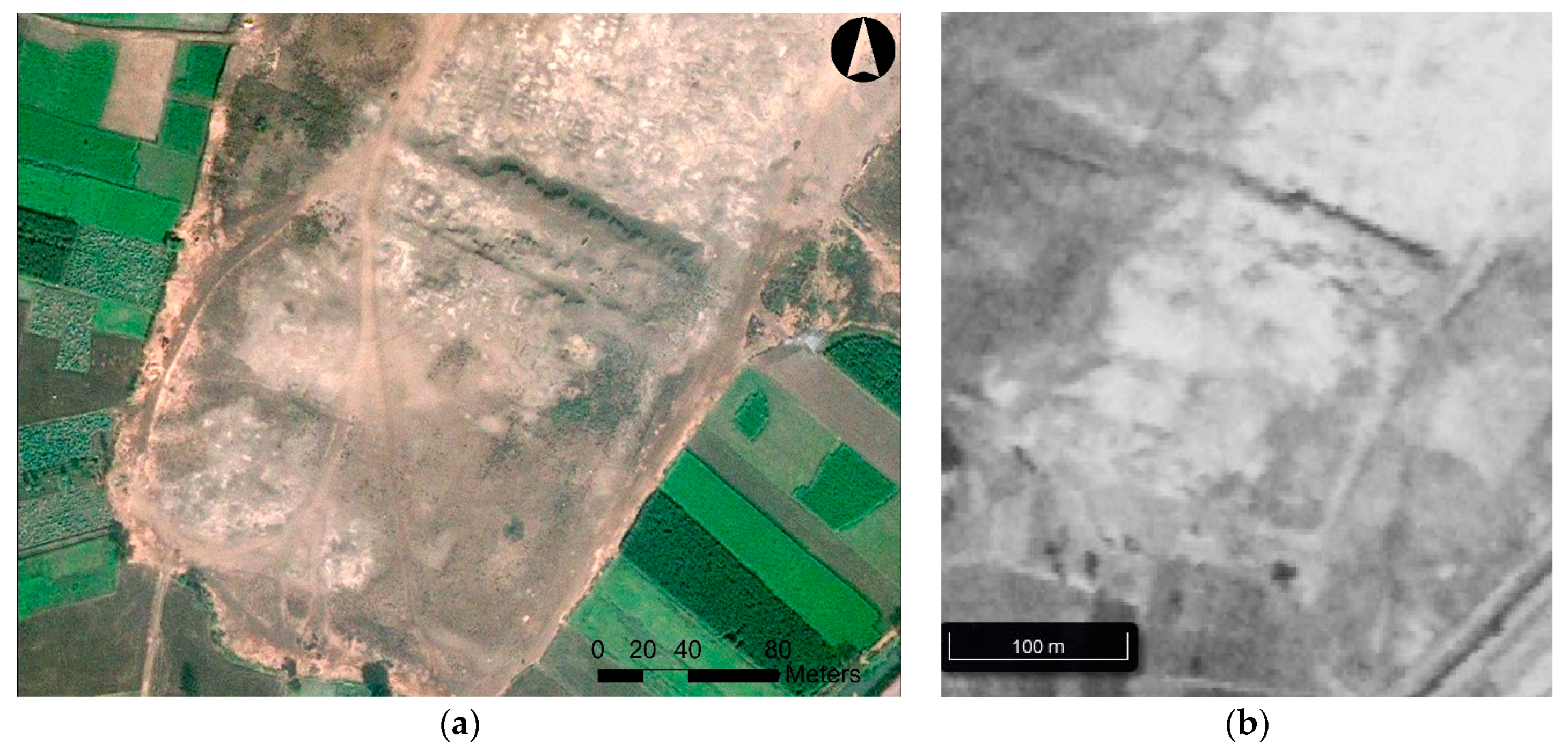
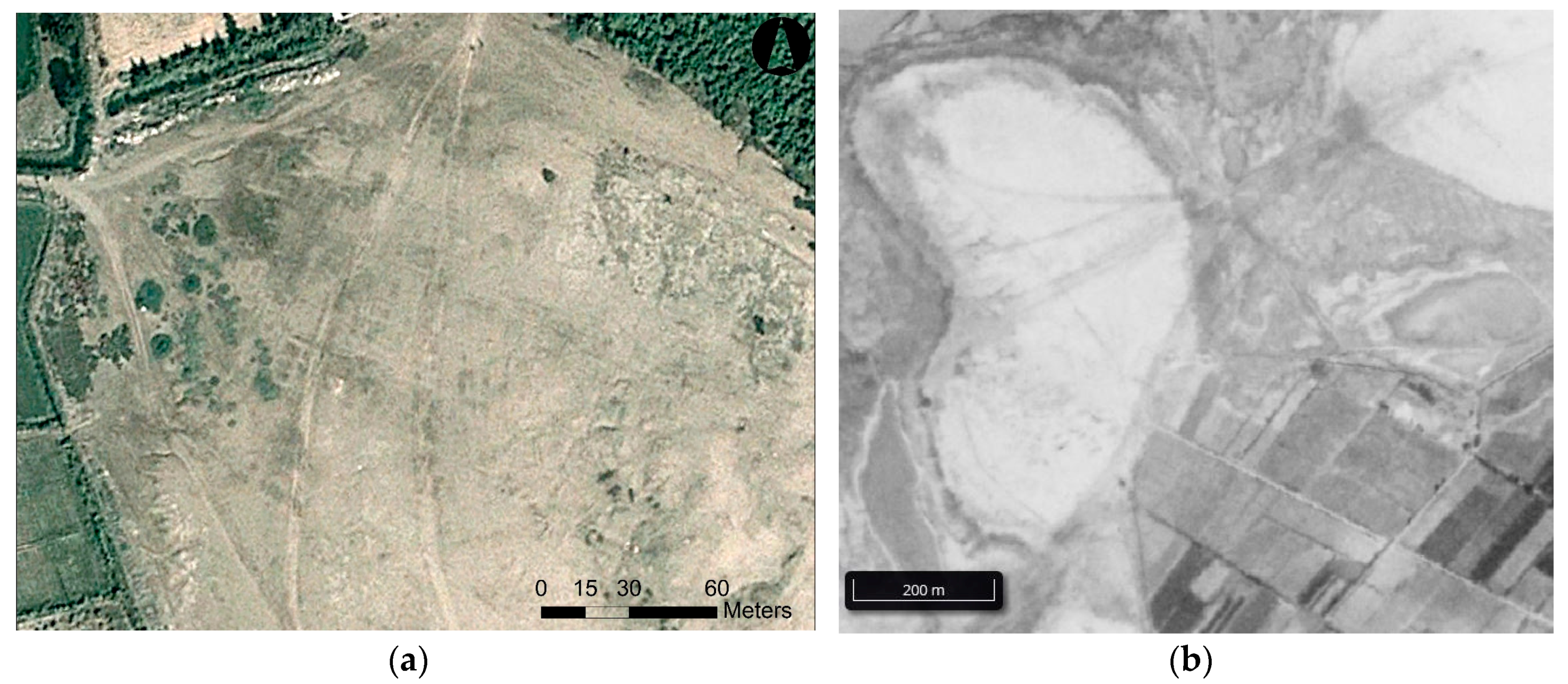
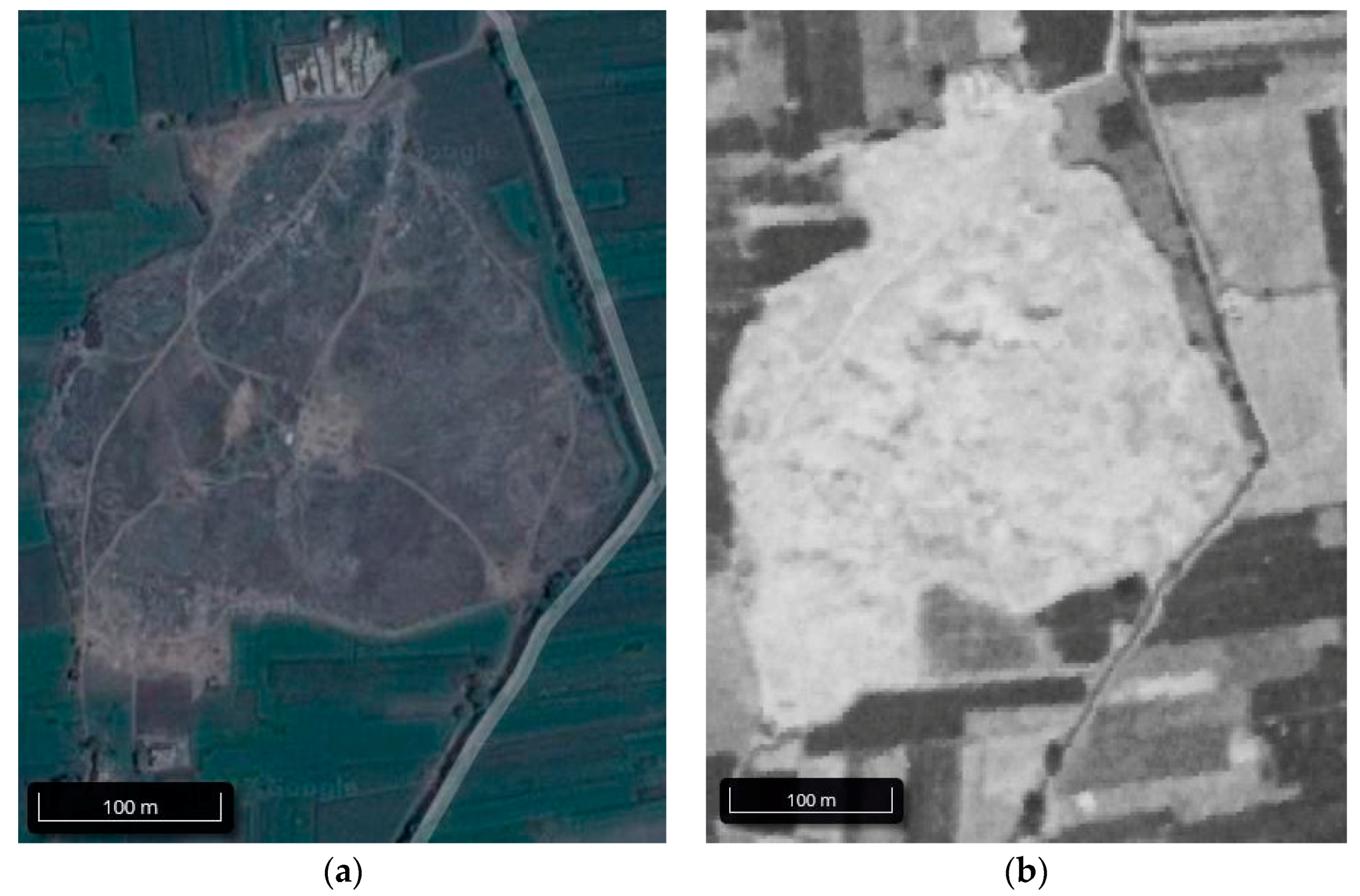
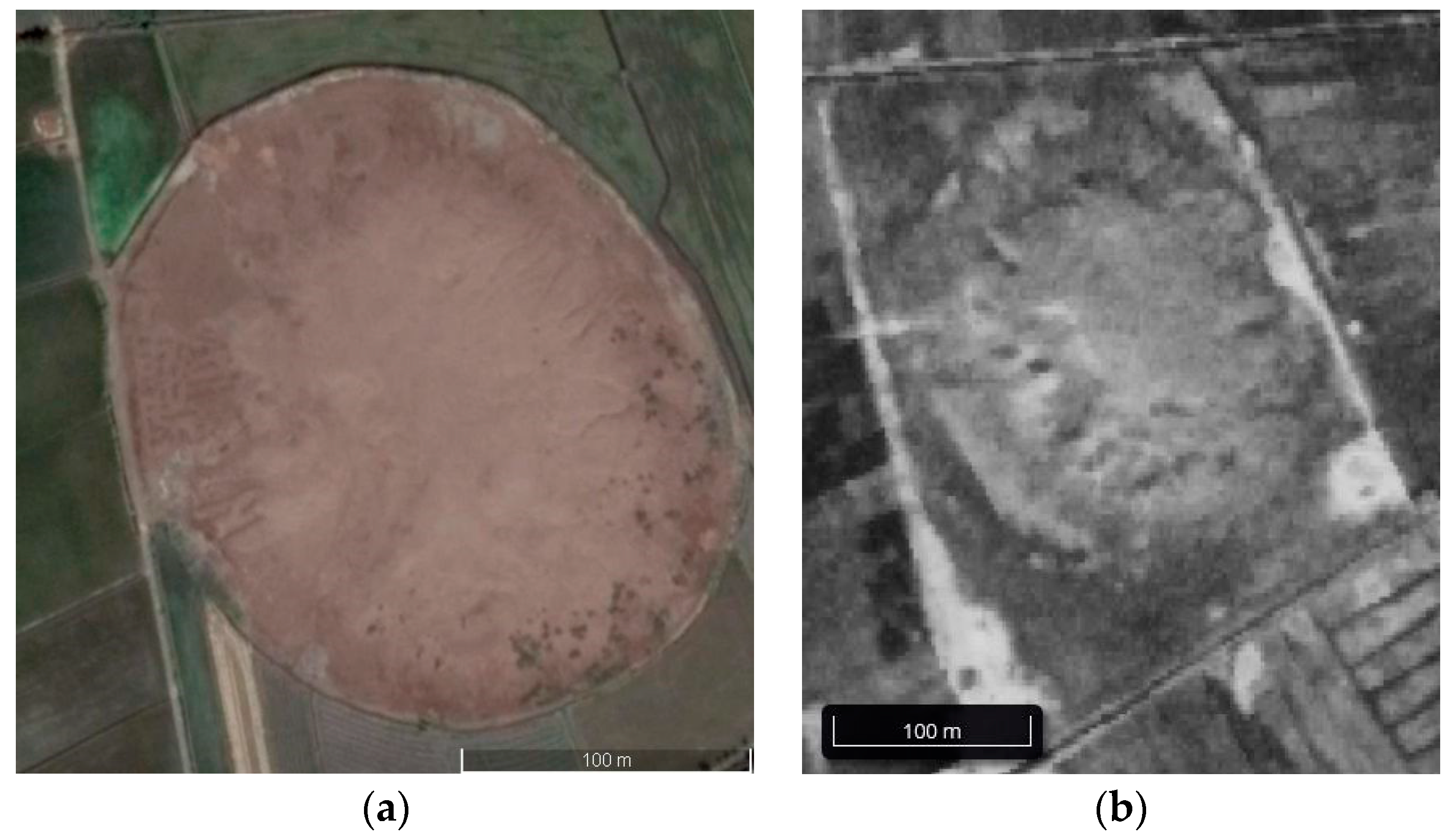
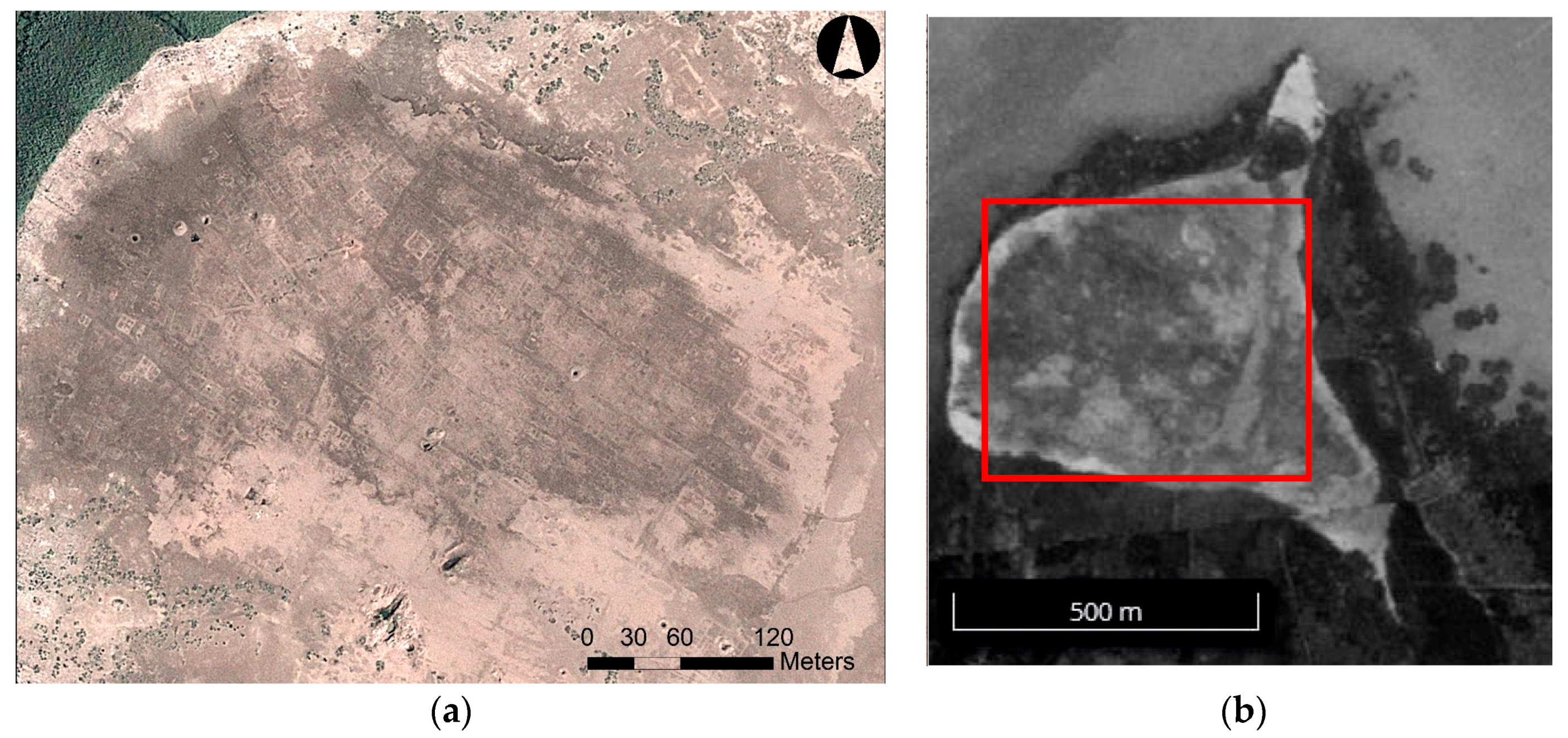


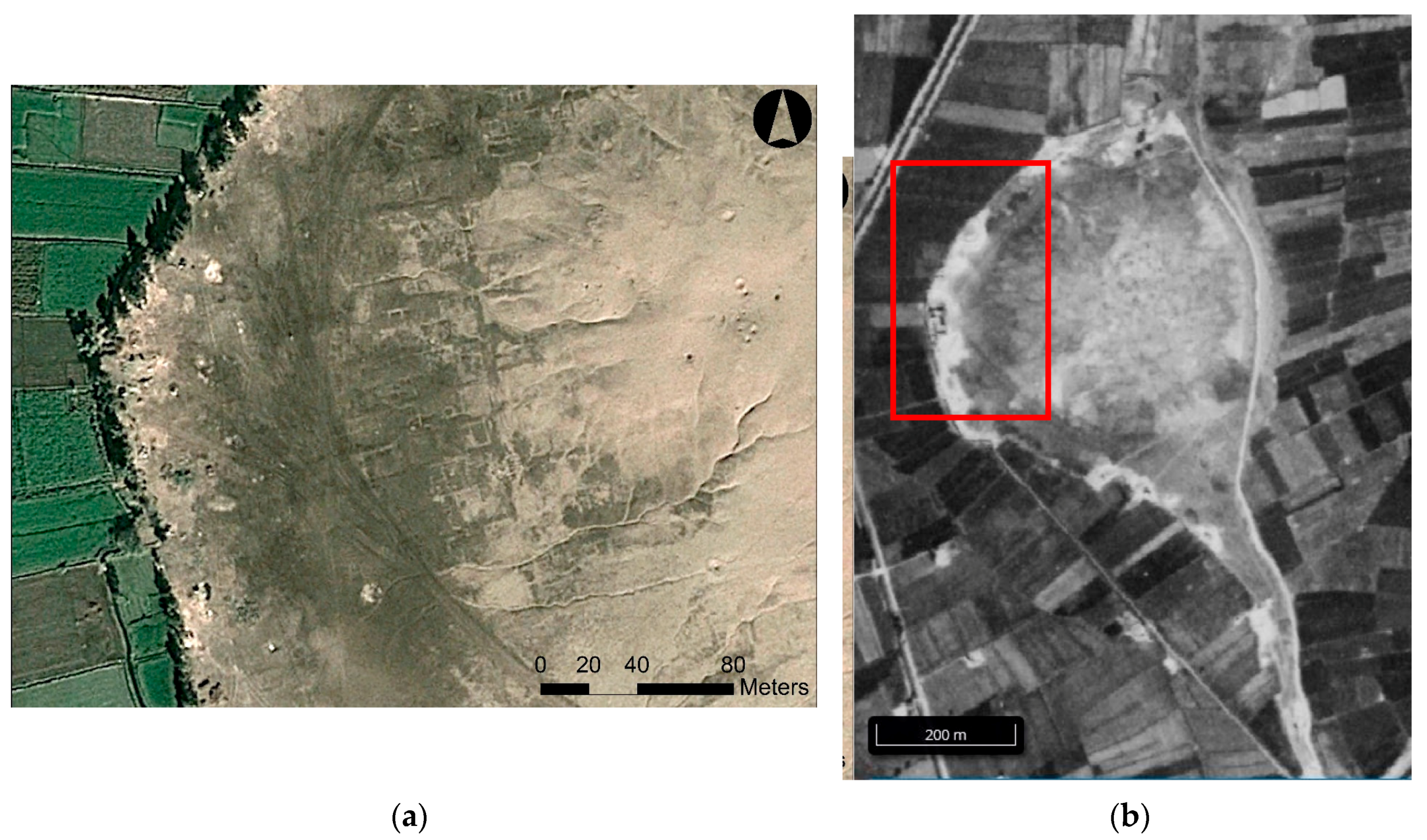
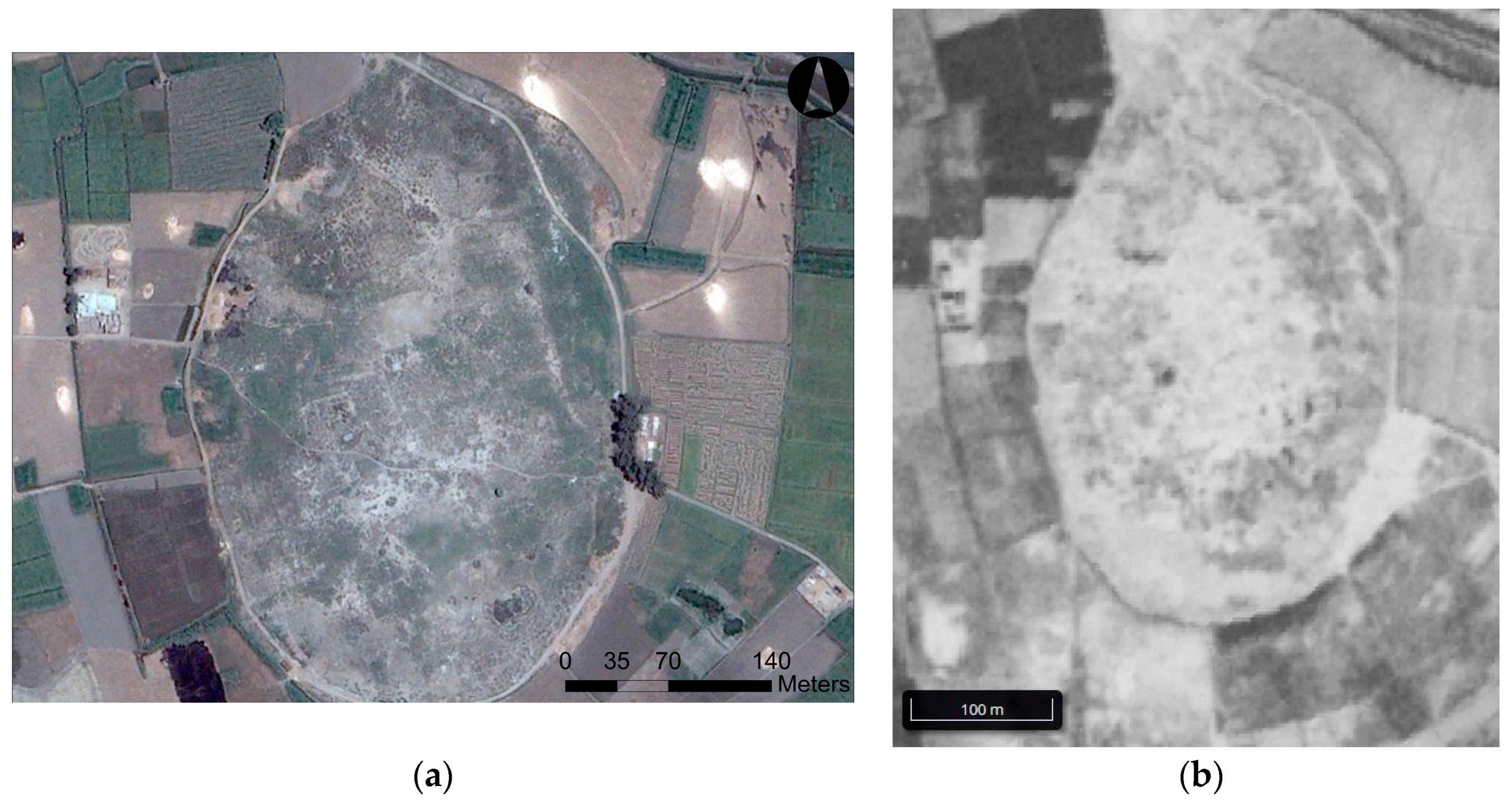
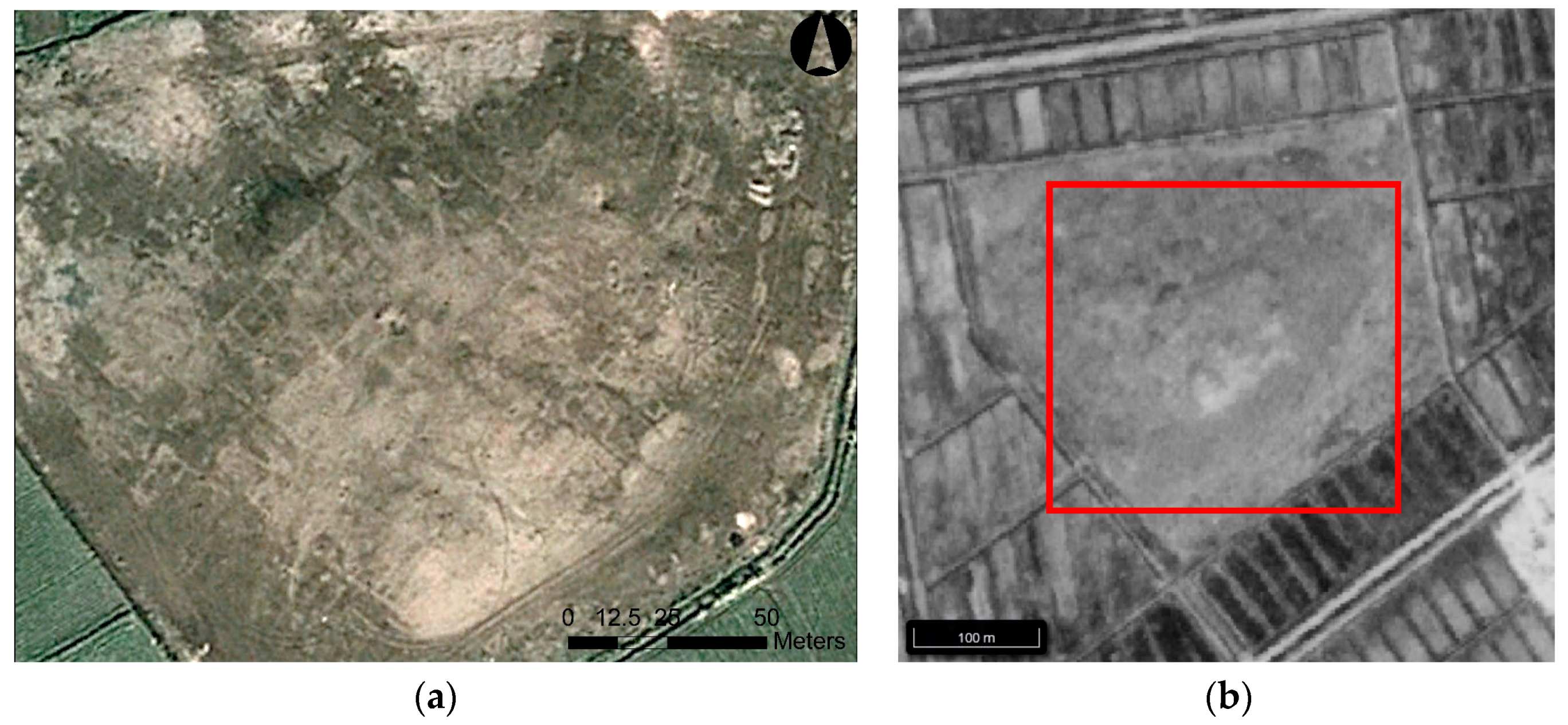
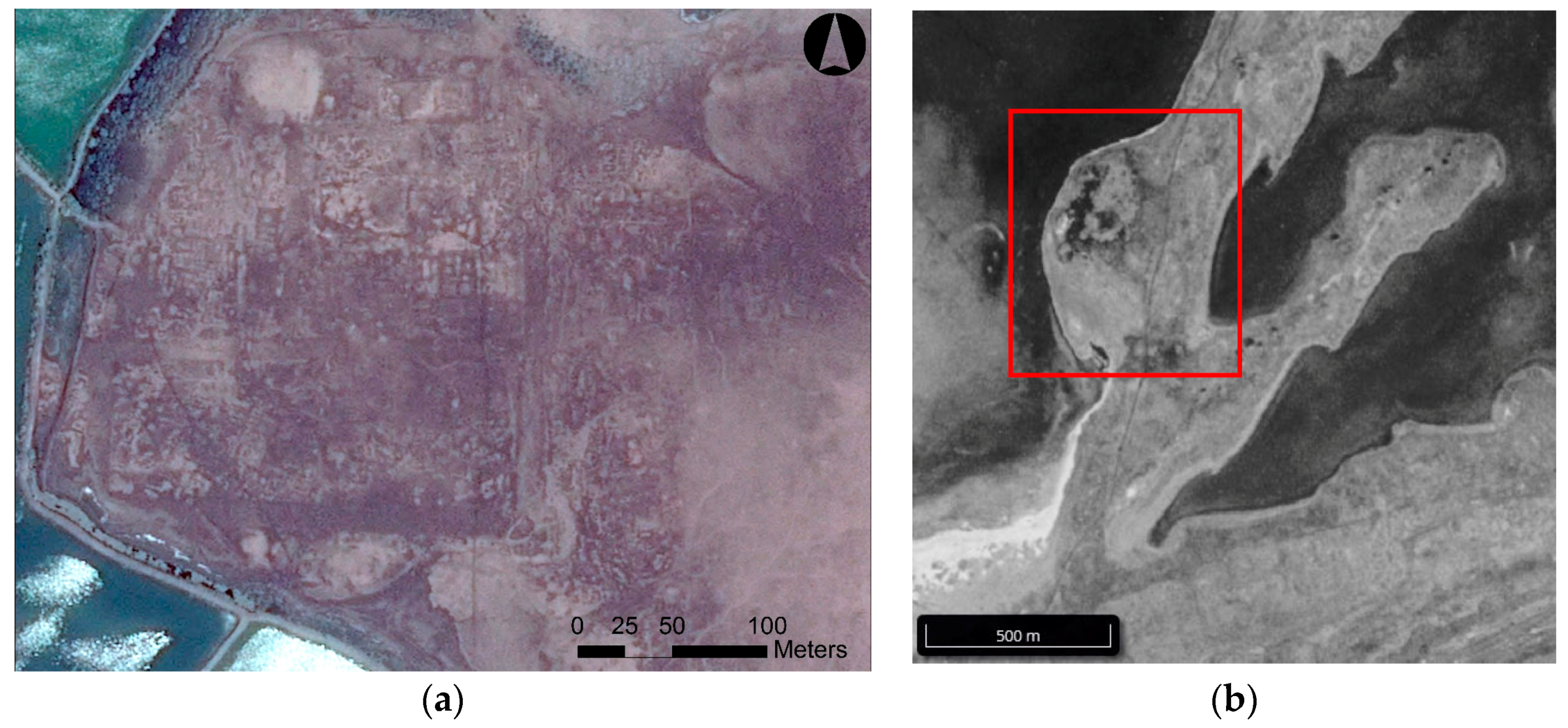
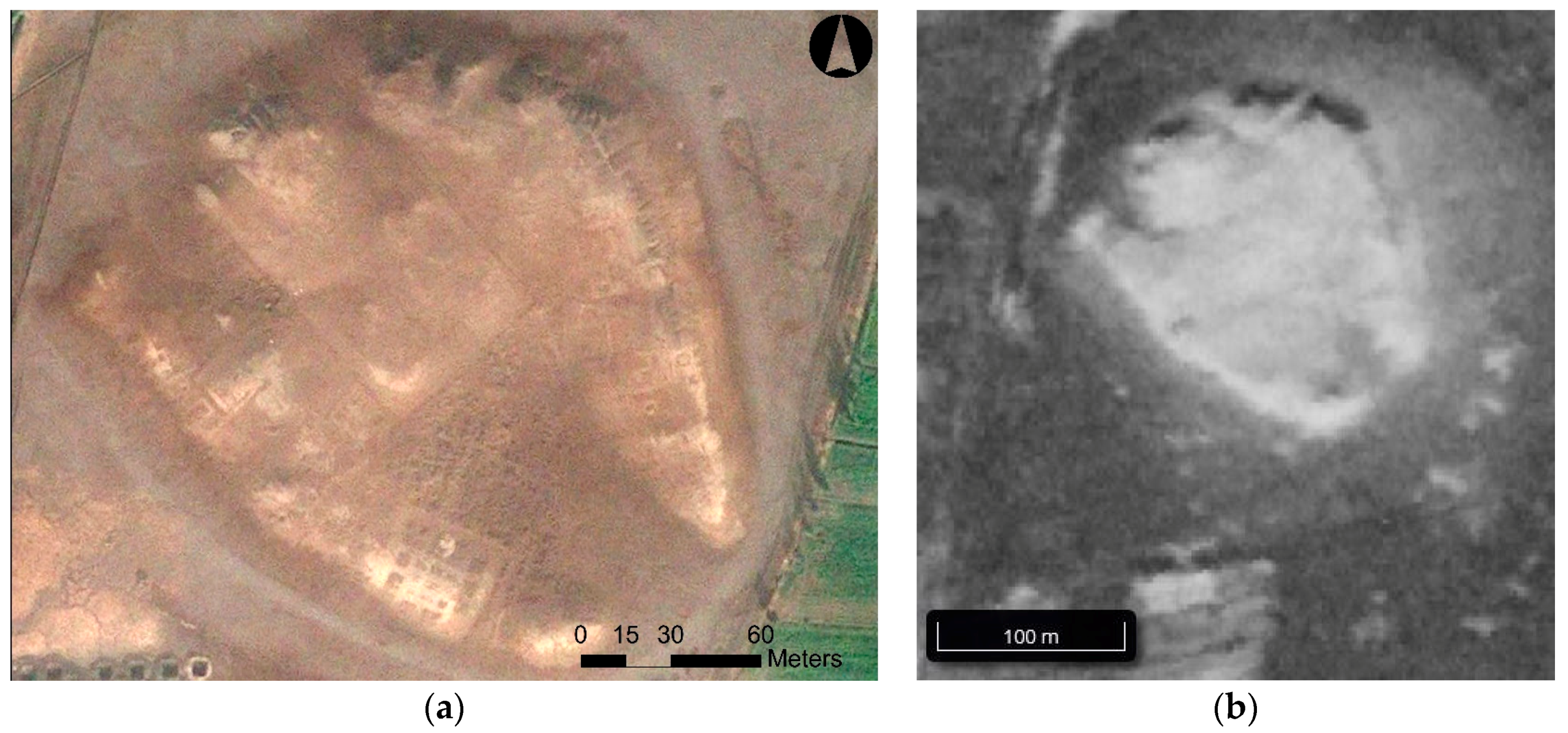
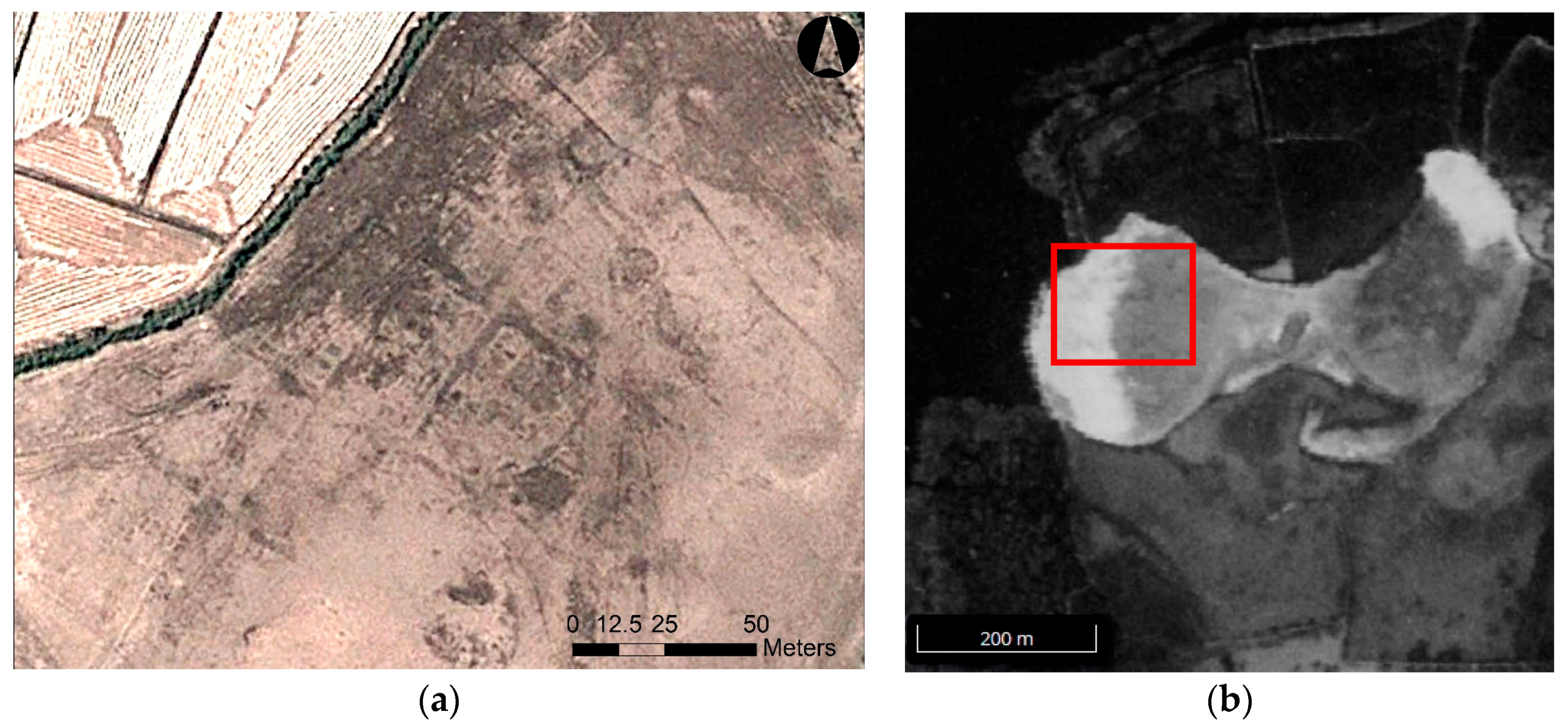
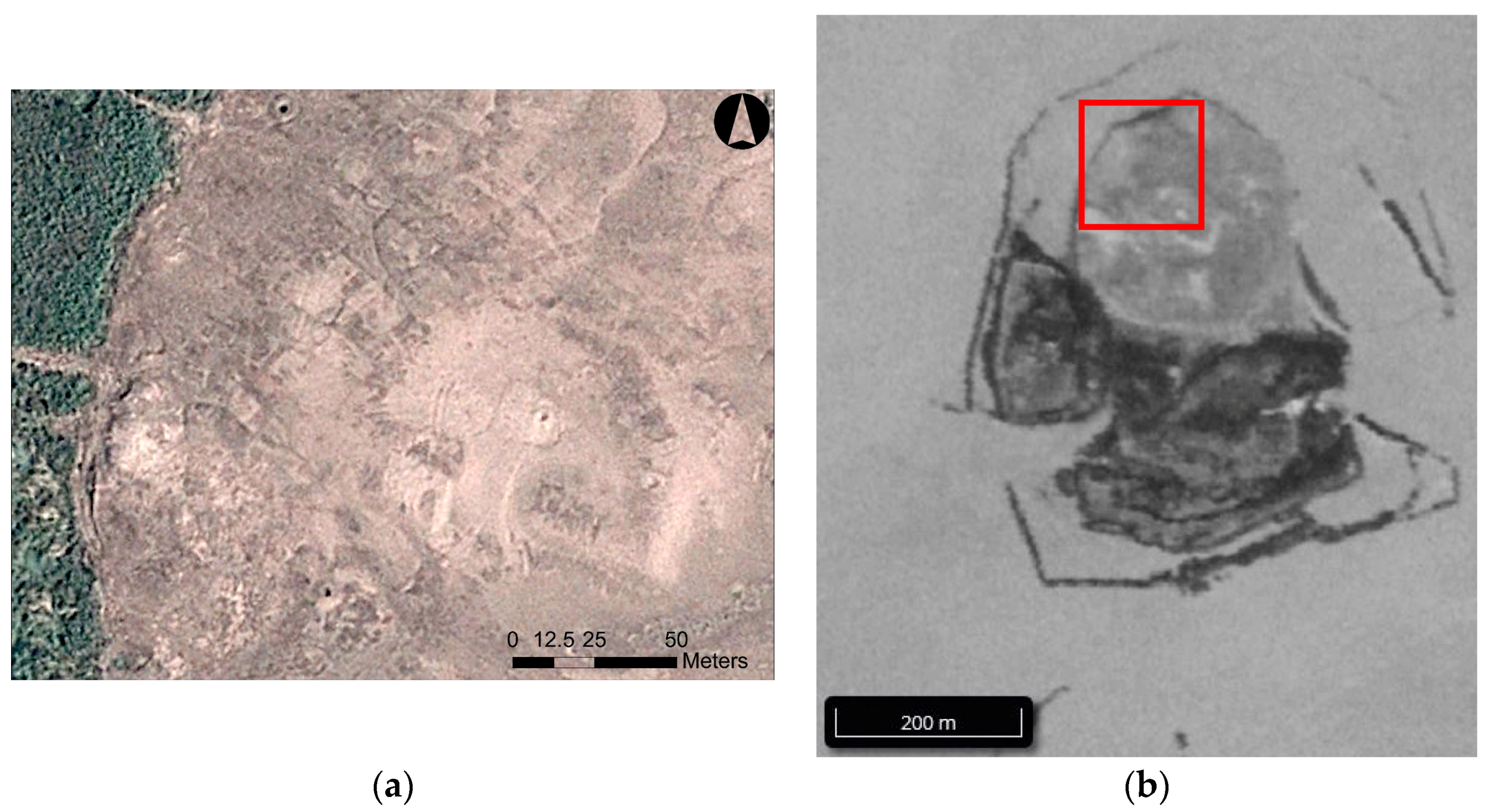
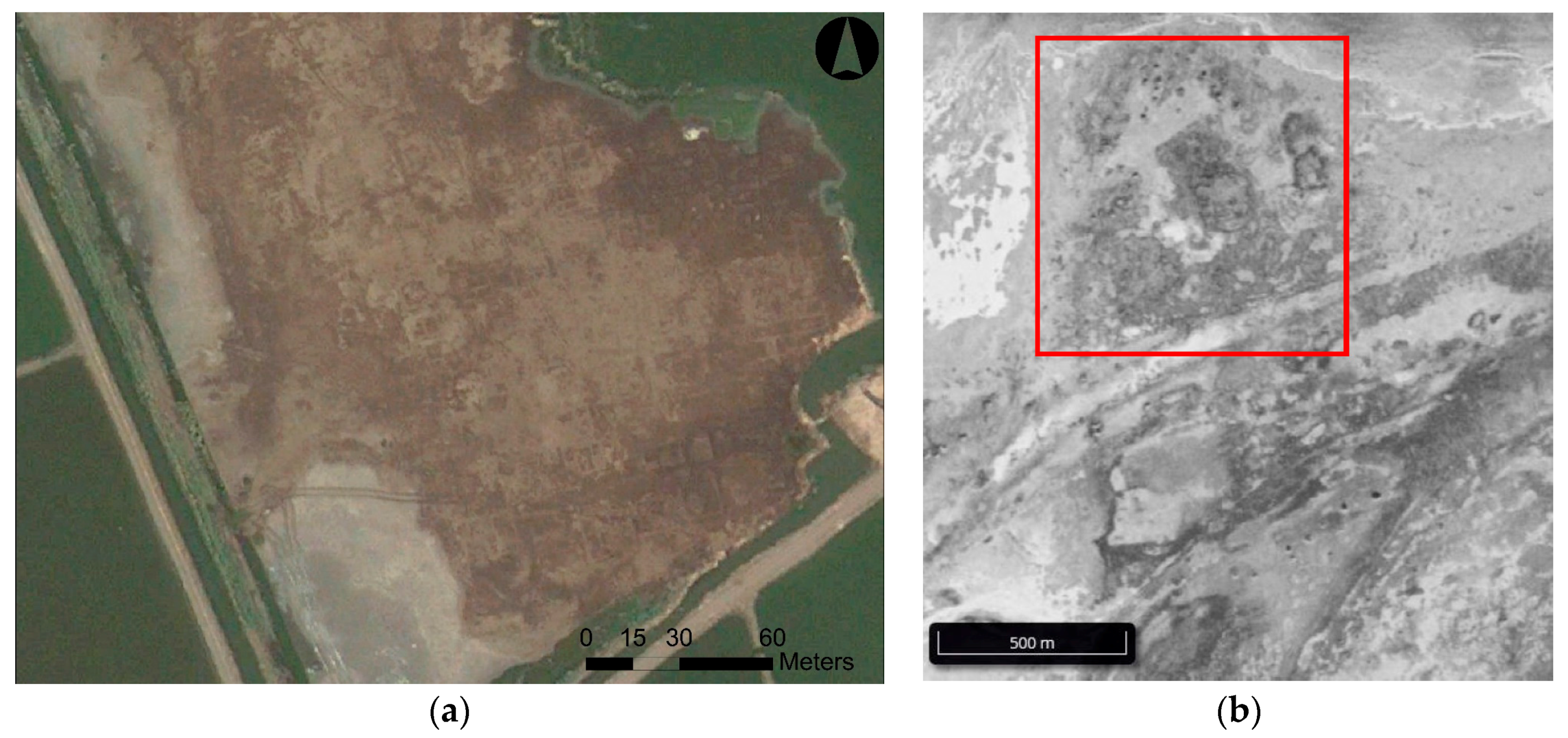
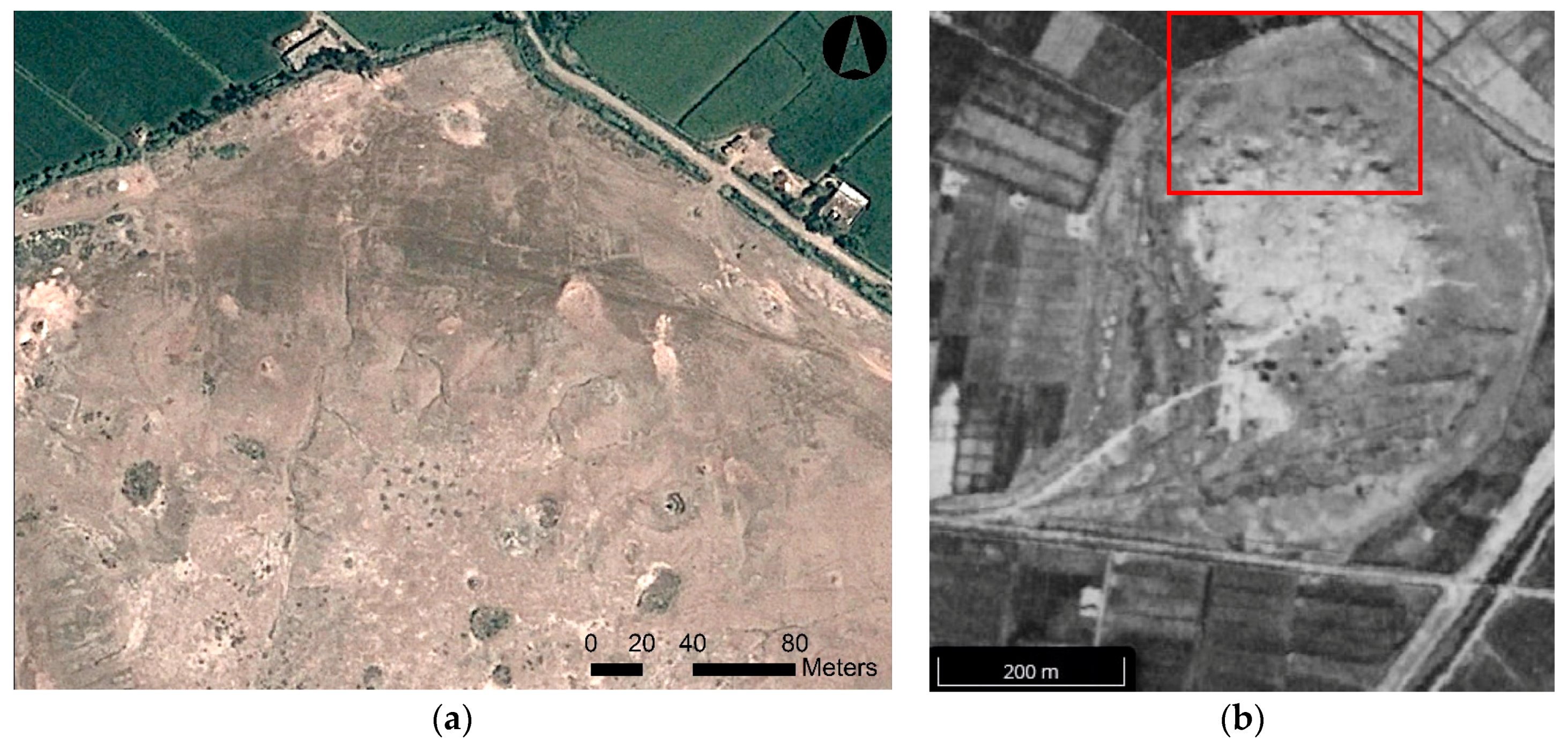
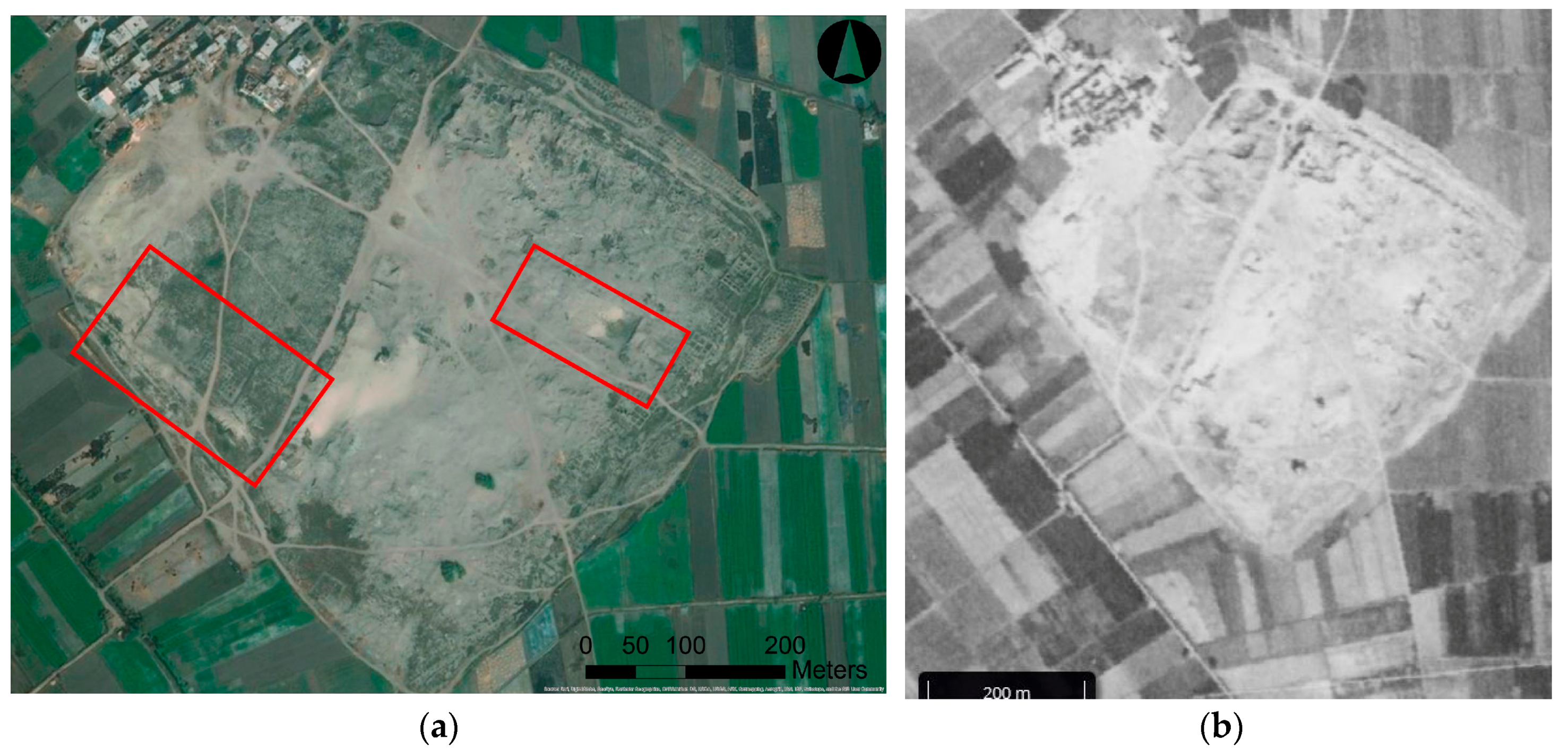
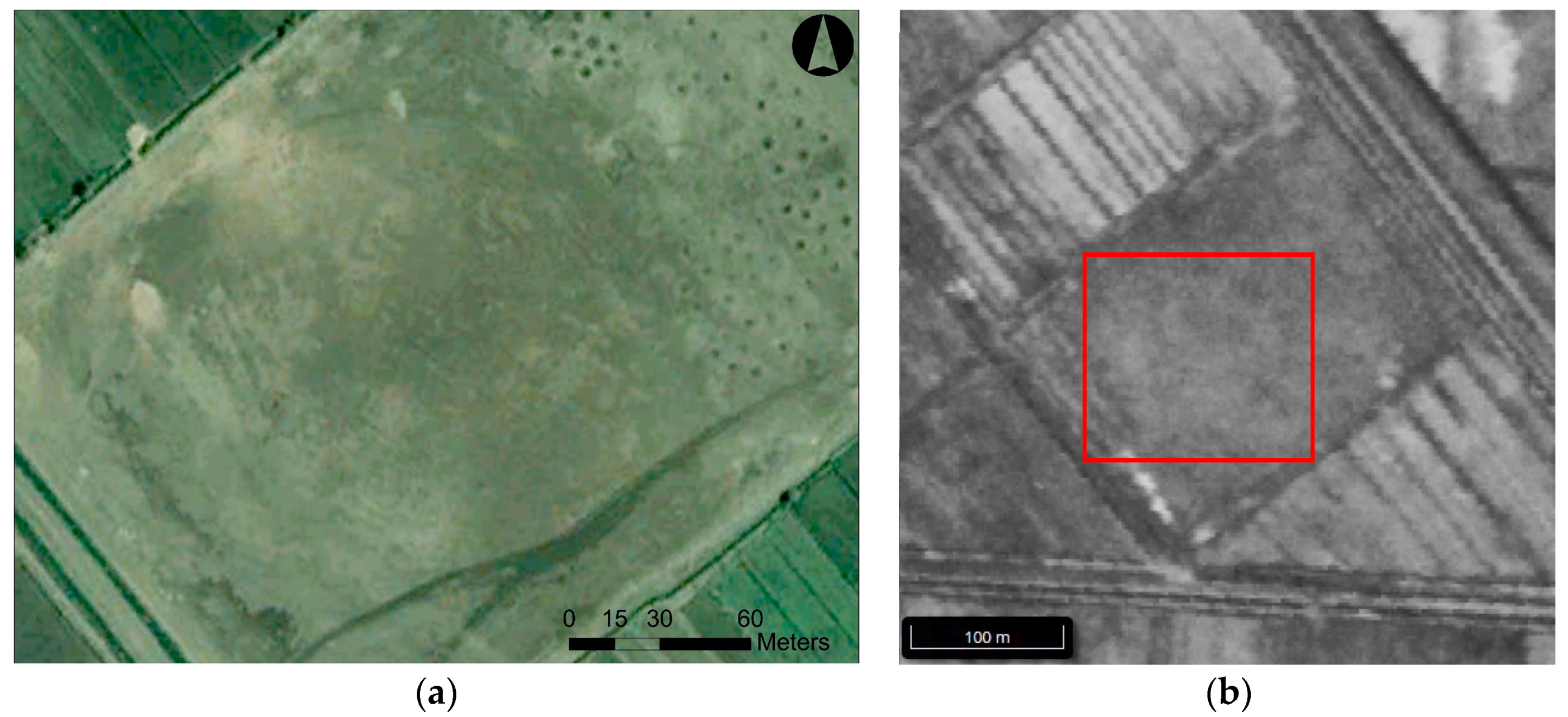

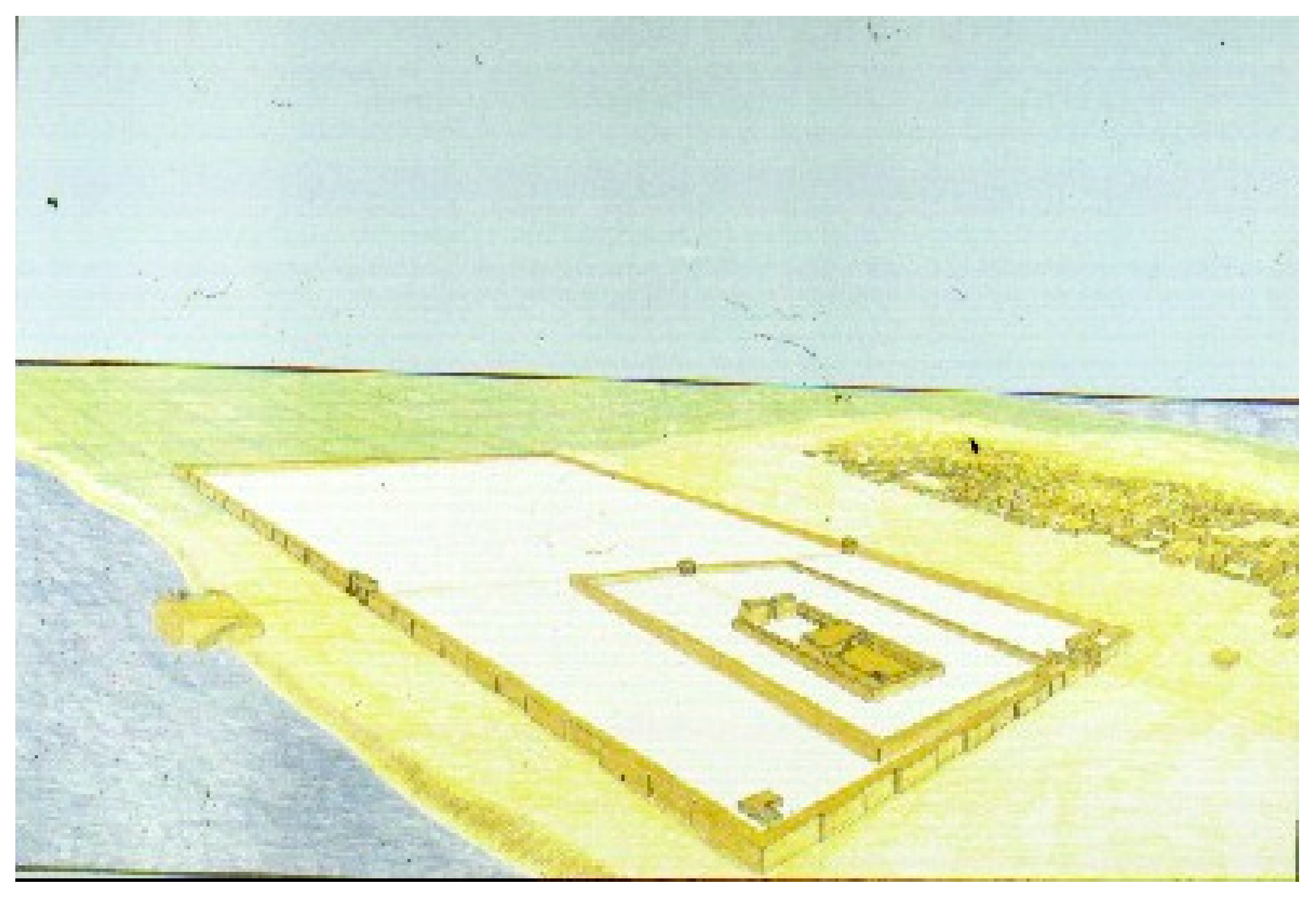
© 2017 by the authors. Licensee MDPI, Basel, Switzerland. This article is an open access article distributed under the terms and conditions of the Creative Commons Attribution (CC BY) license (http://creativecommons.org/licenses/by/4.0/).
Share and Cite
Parcak, S.; Mumford, G.; Childs, C. Using Open Access Satellite Data Alongside Ground Based Remote Sensing: An Assessment, with Case Studies from Egypt’s Delta. Geosciences 2017, 7, 94. https://doi.org/10.3390/geosciences7040094
Parcak S, Mumford G, Childs C. Using Open Access Satellite Data Alongside Ground Based Remote Sensing: An Assessment, with Case Studies from Egypt’s Delta. Geosciences. 2017; 7(4):94. https://doi.org/10.3390/geosciences7040094
Chicago/Turabian StyleParcak, Sarah, Gregory Mumford, and Chase Childs. 2017. "Using Open Access Satellite Data Alongside Ground Based Remote Sensing: An Assessment, with Case Studies from Egypt’s Delta" Geosciences 7, no. 4: 94. https://doi.org/10.3390/geosciences7040094



